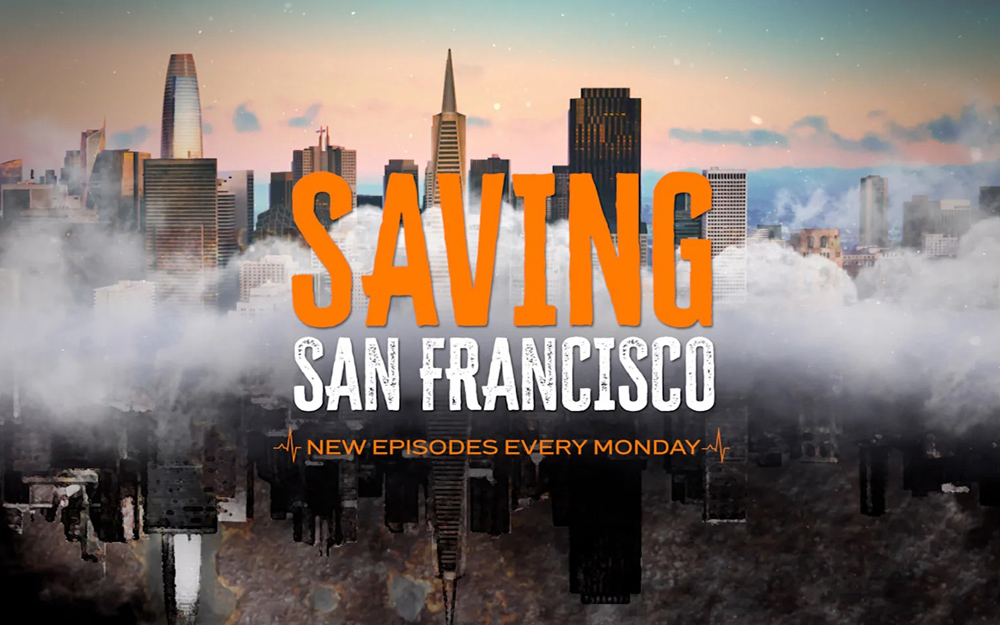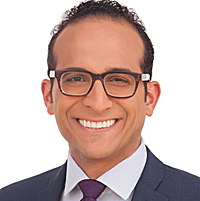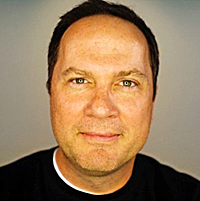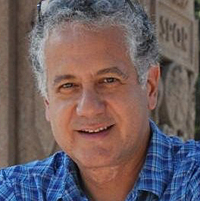
KNTV’s ‘Saving San Francisco’ Brings Netflix-Level Production To A Local Story

Most days, living in north San Francisco’s Presidio neighborhood, a beautiful stretch of waterfront land that’s home to the Golden Gate Bridge and uniquely positioned inside a national park, feels like a dream come true. But for years, area residents have been haunted by an erratic homeless man named James Durgin.
Because he lives with mental health issues and drug addiction, some in the area empathetically express that he should not be subject to traditional penal system punishment. Others find it difficult to live peacefully when he isn’t locked up, as he’s been dozens of times.
The struggles of one Presidio woman, Ann Rea, who says Durgin has attempted to break into her home, rang her doorbell while naked, left chalk-written love letters on her walkway and developed an obsession with her, is the inspiration behind a new investigative report from NBCU-owned KNTV. But the station’s six-episode, digital-native series, Saving San Francisco, blows out this relatively small human interest story into a large-scale examination of the city’s culture and systems.
Series producer Robert Campos, part of KNTV’s roughly dozen-strong investigative unit, says the program is a unicorn mix of hard-hitting journalism and Netflix-style true crime drama, packaged precisely for the station’s local audience.
“It comes at a time when people are really hungry for something that will stand out as deep and thoughtful and committed,” Campos says. “You see a lot of stuff that isn’t that, and I’m betting on people being able to tell the difference.”
The series was shot on Sony A7S III cameras, as well as hidden cameras placed in casings as small as soda bottles. Footage was edited on Adobe Premiere with a gaggle of graphics created in After Effects and at NBC Arthouse, the company’s graphics hub based in Dallas. The team’s 30-plus interviews were transcribed using Trint, web software that allows for sound exporting and light audio editing.
But the big kahuna for Saving San Francisco’s production team in terms of gear was a souped-up surveillance van the network has used for years. Gray-colored and innocuous on the outside, with curtains and tinted windows shielding its occupants from the eyes of passersby, Campos says the inside features a raised floor in the back workspace, a rolling chair with a tripod mount, quiet fans keeping everyone cool without running the engine and air conditioning, and a power interface for plugging in lights and laptops.
The production value shows up in the piece, with shots from high-arching drones, as well as close-ups and everything in between; a dramatic digital soundtrack; various editing transitions; tasteful lighting and other optically titillating features. Watch Saving San Francisco closely enough, however, and the hours spent investigating the story also reveal themselves.

Bigad Shaban
Work on the project began in earnest last May. Though the core members of the production team — Campos, reporter Bigad Shaban, and photographer/editor Jeremy Carroll — had other stories to file, they still combed through 14,000 files and pulled from 4 terabytes of media to tell the story. They had to uncover and scan thousands of hard documents from San Francisco’s courts, examine city crime statistics and budgets and repeatedly follow-up with sources. (For this project, the station’s web data scrapers mostly stayed on the sidelines.)
The crew ramped up production in December to meet its post-Super Bowl deadline. The station picked the Feb. 28 premiere date so it could run promos for the series during the big game, optimizing exposure and, hopefully, viewer interest.

Jeremy Carroll
To reach the finish line as the COVID-19 Omicron variant descended upon the U.S., Campos says his unit and other station department members, including those from marketing and social media, engaged in weekly, sometimes bi-weekly Microsoft Teams meetings. Editing sessions were also conducted over FaceTime, all out of safety concerns.
The result is a potpourri of tasteful storytelling visuals. Incarceration rate statistics are displayed in graphic form as though spray painted on closing cell block doors. Illustrated stacks of $100 bills multiply as the city’s budget balloons in the narrative, and instructional charts help educate viewers about connectivity between local government branches and services.
In large part because Saving San Francisco is a digital-only presentation — released exclusively on KNTV’s various platforms, including its YouTube page, streaming channels, as well as its own website and app — Campos & Co. were awarded robust creative freedom.
One of his favorite moments from the series is the opening of Episode 2. A record player needle drops on an album and Shaban’s voice asks, “Have you ever been in love?” In a complete tonal departure from Episode 1, a light-hearted sequence buoyed mostly by a city hall wedding ceremony generates viewer sensations of glee, comfort, safety and other warm feelings. The narrative soon takes a sour turn, though, as images of impoverished San Franciscans sleeping on sidewalks and taking drugs dominate the film stock. Shaban observes in his voiceover that living in San Francisco has “ups and downs,” but through “heartbreak” its residents are still in love with the city and they “want to make it right.”
The stretch of video summarizes the mission behind Saving San Francisco and other KNTV offerings like it. They’re uncovering fault lines in what should be more functional government operations working to make the city the best it can be. But with crime rising and homelessness still rampant, as it has been for years, there are conspicuous markers that the city is failing many of its citizens — people like James Durgin, Ann Rea and her Presidio neighbors.

Robert Campos
That’s why Campos and Shaban landed on their story as the series’ focus, using the resources at their disposal to, as Campos says, “let their hair down” and experiment as they conducted their digital deep dive. Because “viewers have seen a gazillion stories about homelessness, dirty streets, drug addiction and crime,” Campos says, they had to ask themselves: “How do you tell that [story] in a fresh way so that people feel engaged?”
The verdict? “People always care about other people,” Campos says. “In watching something they will ultimately relate to another person that’s really, truly experiencing these things.”
It’s up to media companies to develop content that’s strong enough to hold people’s attention, he says, and he won’t concede that viewer attention spans have fizzled. Campos asserts that productions like Saving San Francisco, in spite of its king-size resource demands and a run time approaching one hour, tend to pay off for the station. Given the time and attention put into the work, the final product is just that much more appealing.

Stephanie Adrouny
Stephanie Adrouny, KNTV’s VP of news, seems to agree, saying that Saving San Francisco “reinforces our brand of investigative journalism that is solutions-oriented and ‘Moves You Forward.’” Making the series available through digital-only channels, she continues, “allows viewers to consume the project on a number of different platforms at their own pace.”
More and more, those viewers will be able to find KNTV programming on digital, as the network meets them where they are — and where they’re going. But the station’s investigative team isn’t about to shortchange them.
“This is such an interesting time, with so many people looking everywhere for information, and trying to figure out who they’re going to trust and who they’re going to believe,” Campos says. “We’re not fly-by-nighting this thing. We’re going to put in months of work to show you that we’re committed to this story, and not just this one, other stories, and we’re going to continue for years.”
Editor’s Note: This is the latest of TVNewsCheck’s “Newsroom Innovators” profiles, a series showcasing people and news organizations evolving the shape and substance of video reporting. These profiles examine the inception of their innovations, the tools they employ and how they’re reconciling experimental approaches to news storytelling within daily workflows. You can find the others here.


































Comments (1)
Joe Bottoms!! says:
April 13, 2022 at 8:08 am
You want to save this once great city..Fire every Liberal in Government and start over..Will never happen!!